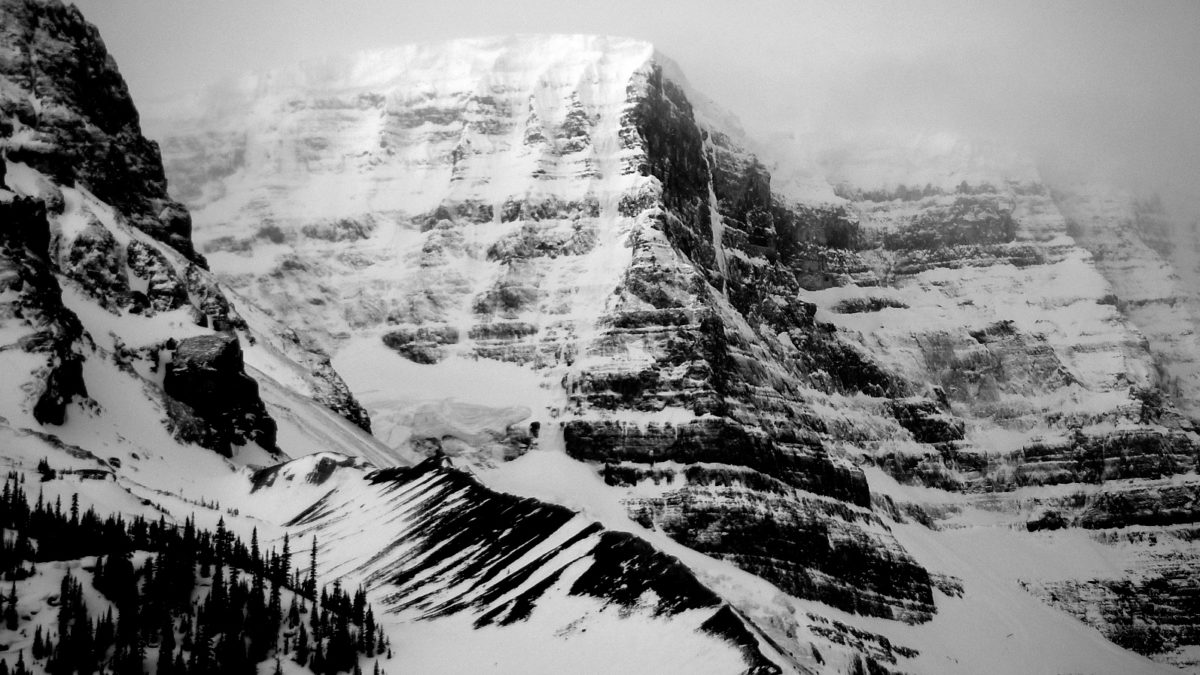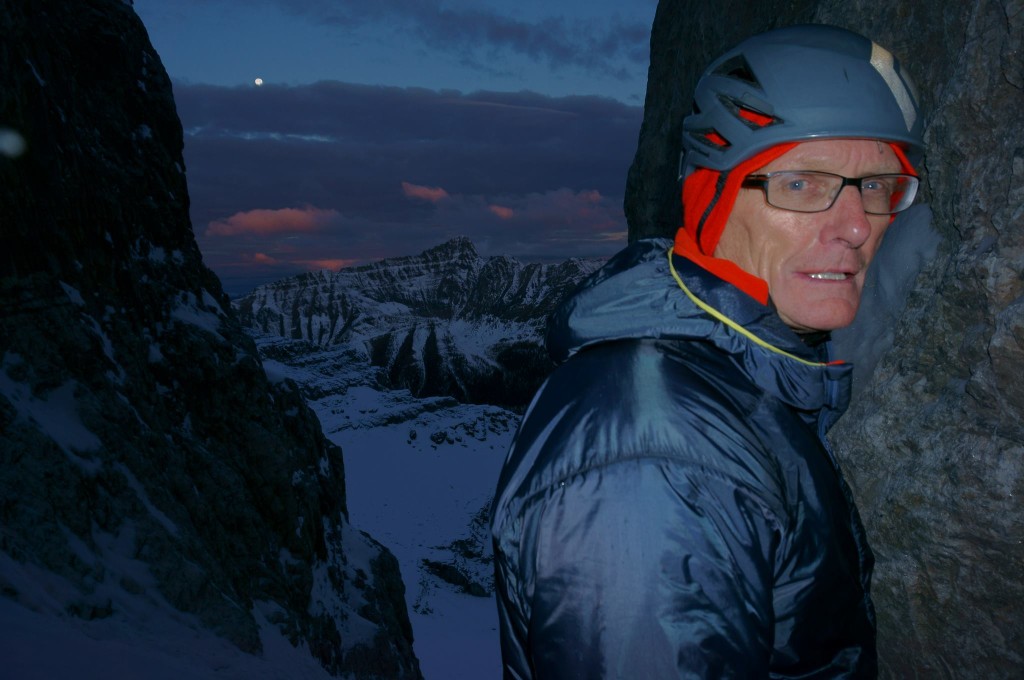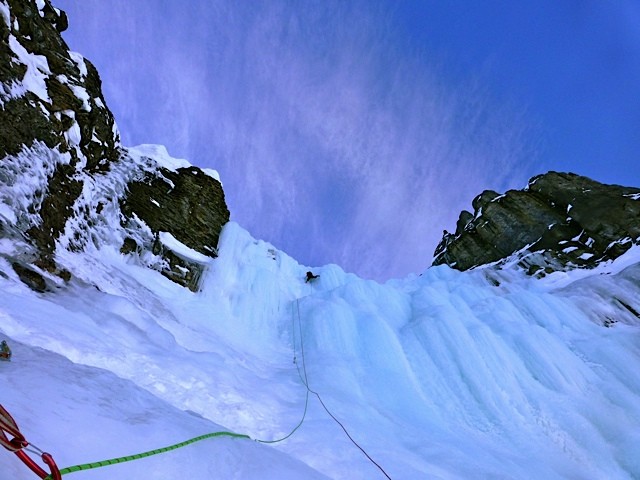Jim Elzinga and Slipstream, a 35-Year Story

In 1979, Jim Elzinga and John Lauchlan did the first ascent of Slipstream, WI4, 1,000 metres, on Mount Snowdome in Alberta.
After climbing the first ascent of Slipstream, Lauchlan said, “On December 27, 1979, Jim Elzinga and I left the Icefields parking lot and walked the two odd miles up the Dome Glacier to the east face ob Snow Dome.
“The next two days were spent climbing a route that is by far the best quality classiest ice climb I have ever done.” Elzinga and Lauchlan spent three days on the ice route, sleeping under dangerous seracs.
As many people know, Lauchlan died in the winter of 1982 in an avalanche on the ice climb Polar Circus. Elzinga carried on, leading expeditions all around the world, from the Andes to Alaska to the Himalaya. After moving away from the mountains in the late 80s he stopped climbing to become a family man.
After a close call with cancer in the late 2000s, he vowed to climb as much as he could for the rest of his life. Still based in Toronto, Elzinga spends half of the year living in the Canadian Rockies, in Canmore, where he and Lauchlan once considered a second home. Befriending keen, young climbers he has managed to climb a number of classic and new alpine, rock and ice routes.

Slipstream was the first major alpine, serac waterfall route to be climbed in the Rockies. A number of people have died on it from serac collapses, avalanches or cornice failures.
Mark Twight soloed the route two hours, it was guided by Eric Dumerac and is only climbed once or twice a year. It is more than an ice climb, it is a serious alpine objective with extreme hazards.
Jim Elzinga had dreamed about going back to Slipstream, revisiting the north face of Snowdome where he and Lauchlan made history, and to climb the route in one day. Nearly 60 years old, he needed to train.
In Ontario, he climbed his artificial wall in his backyard, in the Rockies he climbed as much steep ice and worked on endurance. A strong partner is required to climb the route. On January 28, 2014, Elzinga teamed up with Cian Brinker, who climbed Slipstream in 2013 with Will Woodhead and Brandon Pullan.

Elzinga and Brinker left the car early, crossed the ice-cold Sunwapta River and approached Snowdome on a lateral moraine while avoided the glacial tongue. They roped up beneath the Snowdome Glacier and started navigating crevasses and seracs to the base of a steep snow-cone which leads to the first pitch. After a few hours they were swinging tools under a dark sky.
They made fast time and pulled onto the top of the mountain, through the serac. They crossed the summit plateau, avoiding the crevasses which Brinker had fallen into the year before and reached the descent gully.
Five rappels reach the lower glacier and hike out, but their ropes got stuck after the first rappel. It took them another three hours to retrieve the ropes and reach the base, “Everything was perfect except for our ropes getting caught, but we sorted it out,” said Elzinga, “It has been 35 years, I can’t believe it, a dream come true, again.”



